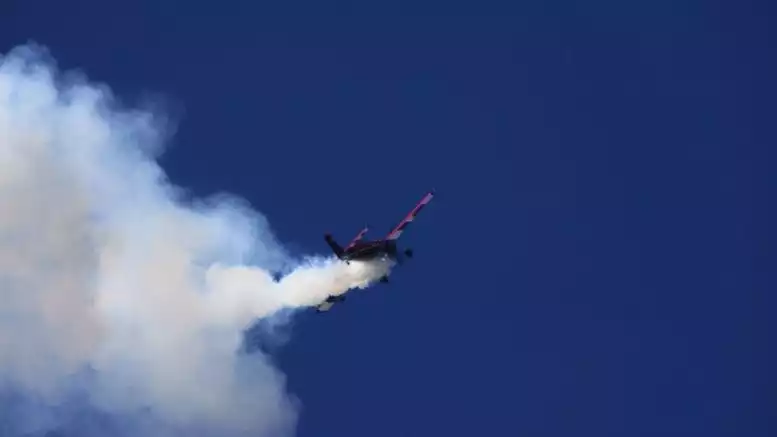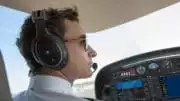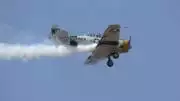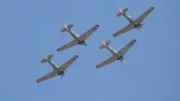Understanding Aerobatic Airplane Cockpit Controls
Aerobatic airplane cockpit controls are slightly different than commercial aircraft controls, but what is the difference and what makes aerobatic planes special?
Aerobatic show pilots have a different skill set than most other pilots, and the airplanes they fly are typically custom built or especially designed for their exciting routines. However, the forces of flight still act on them in the same way as it would a captain of a 777.
Pilots who fly aerobatic airplanes work with a cockpit which is much the same as that of a standard aircraft, with a few changes. The real shift between the cockpits of aerobatic airplanes and standard aircraft comes in how the pilot uses the flight controls and instrumentation at hand.
What’s Not There
The first major aspect of how aerobatic airplane cockpit controls differ from standard aircraft is the way in which they tend to be minimalistic. In an aerobatic aircraft, weight is all. Aeronautical engineers who design and build aerobatic airplanes and aerobatic pilots understand that weight is a vital consideration for executing a safe and well designed routine. While most airplanes take off, fly in level flight, and then land, those working with aerobatic airplanes need to think about flying vertically, cresting over the tops of loops, spinning, and twisting upside down, often in rapid succession.
This drastically affects the relationship between weight, balance, and gravity. At times, the aerobatic pilot will even experience g-forces, which is the effect of gravity pushing down on the body and is what astronauts feel while travelling faster than Mach 1 in a rocket. Then, while completing the top of a loop or a similar maneuver, the pilot experiences a negative g-force, which is what riders on a roller coaster feel as they careen down a large hill.
The Need for Maneuverability
Because of this and the need for an aircraft to stay light and maneuverable, aeronautical engineers of aerobatic airplanes strive to build an aircraft which is as light as possible. One place where pounds can be shaved is the cockpit. Aerobatic airplanes, then, are missing some of the airplane cockpit controls which might be considered standard in other aircraft. Many modern aviation airplane cockpits are “glass cockpits,” meaning that the controls largely consist of screens displaying important information, some of which are interactive. Now, the wide use of Bluetooth technology and advances in systems improvements mean that glass cockpits are affordable for general aviation and aerobatic aircraft, too.
Even items some might consider indispensable, such as a GPS, might not be present in the cockpit. It is not necessary for aerobatic pilots to use a GPS during a show, since they are taking off and landing at the host airport, or doing so close by their performance location. In fact, many aerobatic pilots rely on a portable hand-held GPS system or computer tablet when it’s necessary. It’s common practice for an aerobatic pilot to trailer his or her airplane from show location to show location, sometimes even driving the truck. Aerobatic airplanes are intended for short bursts of precision flying, not long trips across the country, so they aren’t designed to carry much fuel. A long stint in the air, then, would make for a lot of stops for gas. The weight of a permanent GPS then, is often easily discarded.
What’s Always in Airplane Cockpit Controls
There are some indicators which are so important to pilots, and aerobatic pilots in particular, that it’s safe to assume you’ll find them if you ever have an opportunity to peer inside the cockpit. Two of these are airspeed indicators and altimeters.
Airspeed indicators provide the current airspeed of an aircraft. This is vital for airshow pilots, as they must ensure that they are building enough speed to execute their maneuvers. Airspeed indicators show airspeed in knots per hour, as well as miles per hour and kilometers per hour. Altimeters, which report the height and atmospheric pressure above a fixed point, are especially important as well. These report the pilot’s position as he or she makes rapid climbs.
Modern aviation airplane cockpit controls have a form of communications which is acceptable to the Federal Aviation Administration (FAA), as well as a transponder, which report the aircraft’s altitude. But even as engines grew more powerful as aerobatics continued to grow, pilots still sought to remain as light as possible.
Smoke Oil Switch
On the other hand, many aerobatic airplane cockpit controls contain items which aren’t normally found within standard airplanes. One of these, also lodged in aerobatic gliders, radio-controlled airplanes, and parachutist show kits, is the smoke oil switch. The system consists of a tank holding specially mixed paraffin mineral oil, and, if necessary, a color additive.
The nontoxic smoke oil transfers from the tank to one or more small nozzles on the airplane’s exhaust pipe. The combination of the biodegradable paraffin mix and the high temperature exhaust causes the oil to burn, which creates an artificial contrail. This effect helps crowds to follow a pilot’s airplane though its maneuvers, relay its position to other pilots, perform skywriting, and to add flair to a show.
The pilot controls this system with a switch in the cockpit which flips on at the appropriate times. Fortunately for the aeronautical pilot, smoke systems and switches usually don’t weigh much.
Military Aerobatic Cockpit Controls
Military precision flying teams such as the Blue Angels, Thunderbirds, and Royal Air Force Red Arrows use smoke oil to wow the crowds to come to appreciate their skill. The U.S. Navy’s Blue Angels, in particular, carry certain modifications, including inverted fuel pumps, which ensure that the aircraft’s engine continues to receive fuel even when upside down for an extended period. As with a smoke oil switch (certainly not present in a typical fighter jet), military airplane cockpit controls also have a fuel pump activator.
Blue Angels pilots have also eliminated a helmet bag stuffed into the cockpit which tends to fly up into the canopy while the aircraft is inverted. Their control sticks are also equipped with feel springs, as well as fuel presser alert lights and a stopwatch to keep them synchronized with their teammates.
Ready to Soar with Us?







